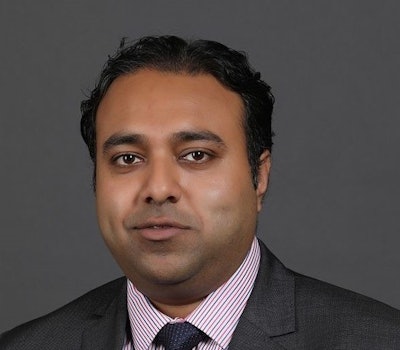
Talent has emerged as a critical resource and competitive differentiator for every enterprise. From a simplistic viewpoint, talent resources can be treated like goods that need to be put through an efficient supply chain to garner the most efficient results. However, talent management is actually quite complex, and it is vital that enterprises be attuned to all the nuances at play.
More specifically, in forward-looking enterprises, procurement and human resource (HR) roles are coming together to manage talent resources. Traditionally, both of these stakeholders have had siloed views of various talent categories, with HR responsible for permanent employees and procurement responsible for temporary workers. This fragmented view of talent management prevents an efficient supply chain, especially from a talent acquisition perspective, and also fails to recognize that managing humans is much more complex than managing materials.
Over the years, as talent became a more critical resource and enterprises needed external help to manage talent better, both the Managed Service Provider (MSP) market, which managed contingent talent, and the recruitment process outsourcing (RPO) market, which managed permanent talent, grew and evolved. Everest Group research shows that the each of these markets has witnessed robust growth in the last few years, growing 12 to 16 percent every year, with combined net fee income of more than $4.5 billion in annualized revenues.
Though MSP and RPO may seem like counterparts, there are significant differences in their objectives and scope.
- MSP: Traditionally, temporary labor has been considered less critical than permanent labor, and often temporary labor did not comprise highly skilled talent. Enterprise buyers held a very procurement-centric view of temporary labor, focusing on cost savings and compliance. The aim of using MSPs was to move a task of relatively low strategic importance (i.e., managing the suppliers/staffing vendors and administration of the temporary workforce) to an external organization. Over time, the MSP mandate increased to include freelancers/independent contractors and services procurement as well, especially when the low-hanging fruit around cost and compliance had already been picked.
- RPO: Traditionally, the focus of enterprises here was primarily on permanent talent acquisition rather than the management of the workforce once they came into the organization. Cost savings and flexibility (i.e., the ability to scale up and down in response to hiring demands without being burdened by a high fixed cost in terms of recruitment personnel) were the primary drivers. But as the RPO market evolved, quality of talent increased in importance, as did valued-added services such as employer branding and providing a better candidate experience. While procurement was involved narrowly (in terms of selecting the RPO providers), RPO was primarily an HR game.
Now, as talent needs and sources have evolved, and high-skilled, critical and difficult-to-find talent can be either permanent or contingent, it is necessary to unify MSP and RPO into one supply chain that offers the best of the procurement and HR worlds: This is where the concept of Total Talent Acquisition (TTA) comes to play. While the concept in itself is not new, authentic, real-life examples of the concept in action are rare. In some cases, elements of TTA have been introduced, but these efforts have been half-hearted or ineffective. For example, some enterprises have used the same service provider for MSP and RPO, but the service provider has assigned separate teams for permanent and contingent labor; thus the siloes remained, and the organization still operated without a unified view or optimal talent management plan in place.
Everest Group defines Total Talent Acquisition as “a future-ready talent management approach that helps an enterprise achieve the maximum ROI on its talent resources through complete alignment with overall business strategies and objectives. It is driven by a holistic approach that takes a combined view of all categories of talent and talent alternatives and is enabled by an interconnected, synergistic ecosystem comprising the internal organization (process, digital, people) as well as external partners, while at the same time taking into cognizance the individual human differences.”
As the definition indicates, TTA is not an easy thing to achieve. It requires changes in the mindsets of various internal enterprise stakeholder groups, process reconfiguration and investment—in terms of time (by the enterprise) and money (by the service provider). However, the following steps can accelerate the unification process:
- Integrate the common tasks. Processes that are common to, and affect all categories of, talent—such as employer branding, building and maintaining talent communities and talent pools, and social media outreach—are perhaps the easiest to integrate. This can be achieved relatively easily once a common MSP+RPO provider is in place.
- Unify candidate sourcing. Sourcing of candidates, whether through suppliers/staffing agencies or directly by the RPO/MSP provider also can be unified by having a common provider. The provider ought to provide some volume discounts given the fact that they are managing a larger portion of the pie and their fixed cost (in terms of the common tasks mentioned above) is now reduced.
- Maintain the human touch. It is key not to treat candidates as robots/machines in the effort to create or bring in a “holistic” and an “overarching” change to achieve TTA. Candidate individuality should not be sacrificed through over-standardization. Each candidate is different and has different set of expectations that need to be a part of the talent acquisition strategy. Over-dependence on technology should not result in a loss of the human touch. Additionally, candidates need to have the same type of experience—especially in terms of mobility, self-service, or “customer” experience—that they encounter in their other walks of life (i.e., in a B2C environment). Consequently, tracking of additional metrics such as candidate satisfaction becomes important.
- Align demand management. This is not only the hardest to achieve aspect of TTA, but also the most critical because the biggest benefits of TTA arise from here. Demand management is the ability to determine what type of talent is needed, from where, and whether it is the right quality. Demand management, if coupled with long-term workforce planning aligned with an organization’s strategic objectives, is likely to provide significant advantages. But it isn’t easy: on one hand, few service providers have the analytics capability to help in this type of decision making, and on the other hand, the enterprise must treat their service provider as a true partner with whom they willing to share information, data (beyond just talent acquisition), and time. Interestingly, some organizations are experimenting with a “partial” form of TTA: a service provider (either the MSP or the RPO provider) is providing the demand management strategy, and then, depending upon the type of hire required, the execution of the strategy goes to the relevant MSP or RPO. This partial approach has the advantage of bringing in the biggest benefits of TTA while avoiding the all-eggs-in-one basket risk.
Currently, TTA is still more of a buzzword with limited action on the ground, but true examples are starting to emerge as some enterprises and service providers take the plunge together. TTA is likely to be the best way forward, and key enterprise stakeholders (especially HR and procurement) need to start planning and working together to achieve it.













